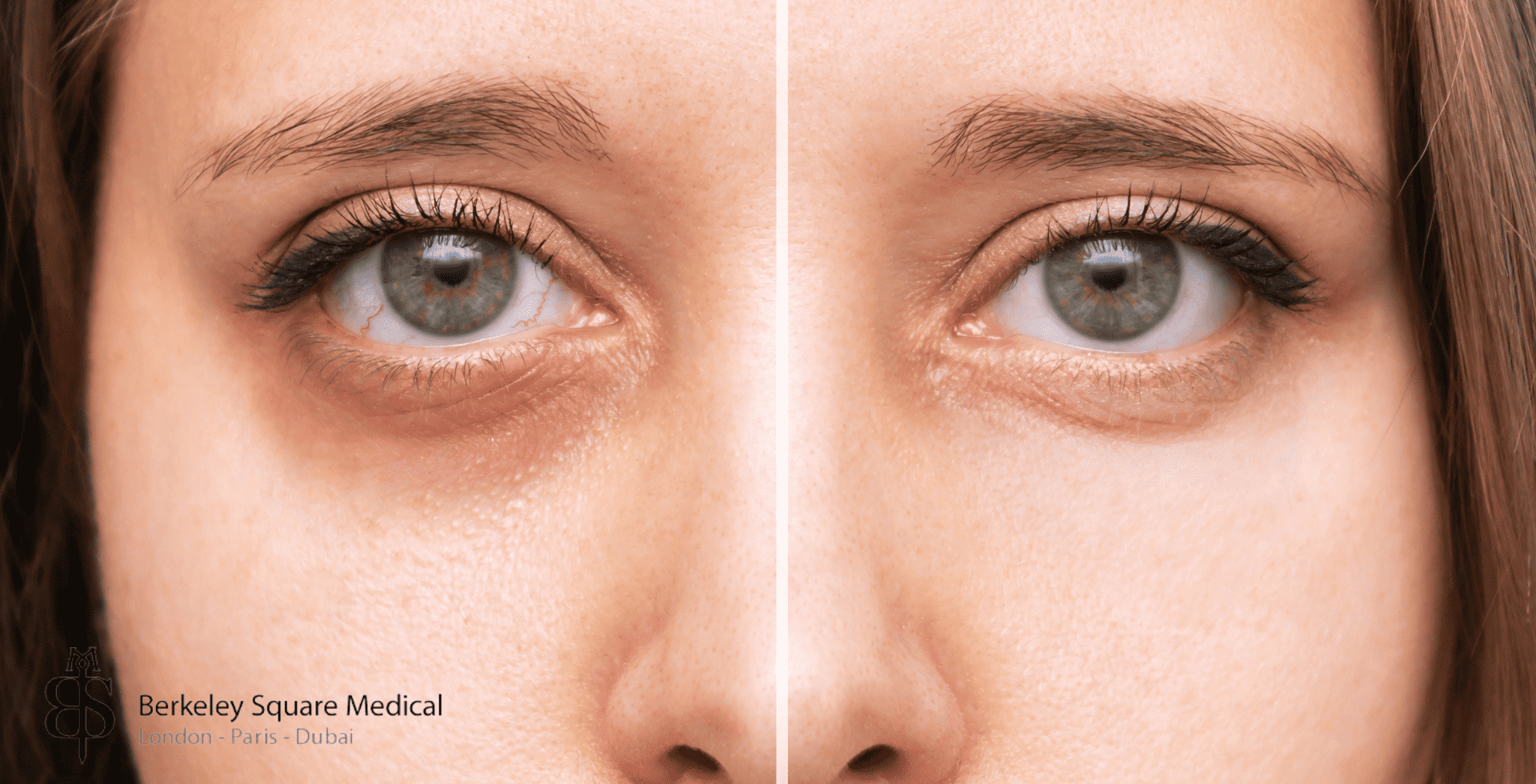
While most people have a successful surgery with no problems, some people may develop dark circles or “black eyes” after rhinoplasty due to bruising under the eyes. In most cases, this fades within 7–10 days. However, some patients—especially with Mediterranean or darker skin tones—may notice discoloration that lasts longer.
In this blog post, we will discuss the causes of dark circles after nose surgery, as well as the timeline for recovery.
We will also provide tips on how to reduce the appearance of these circles.
Dark circles or “black eyes” after rhinoplasty are common and usually caused by bruised capillaries during surgery.
Most bruising fades within 7 to 10 days, though some patients may notice lingering discoloration for several weeks.
People with certain skin types, especially those with Mediterranean or darker complexions, may be more prone to longer-lasting pigmentation.
Persistent dark circles are not permanent and can often be treated with skincare options like hydroquinone, chemical peels, or laser therapy.
Cold compresses, rest, hydration, and natural remedies like Arnica and Bromelain can help reduce bruising and speed up recovery.
One of the most common side effects of rhinoplasty is the appearance of dark circles under the eyes.
This can be caused by the alteration of the nasal bones, which can also break some capillaries under the skin during the procedure.
This often leads to bleeding under the facial skin and is the primary cause of the appearance of dark circles.
While this may be a normal reaction to the surgery, it can be quite alarming for patients who are not expecting it.
The good news is that, in most cases, the bruising will lighten within the first few days and will be completely gone within 10 days.
Some patients have trouble healing completely from bruising after a rhinoplasty. Dark areas can continue to persist for months after surgery.
This can happen to people of certain backgrounds – usually Mediterranean – due to a genetic predisposition.
The bruises may not be broken down and absorbed by the body, leaving iron or hemoglobin deposits behind resulting in changing the skin’s colour.
Even if this happens to you, fear not! The result is not permanent discoloration, correcting this condition is possible through similar treatments to those for sun spots.
Typically, they involve applying topical hydroquinone for several weeks before undergoing a chemical peel.
Laser treatments might be another solution to get rid of stubborn circles.
The time frame for healing in these rare cases can take anywhere from 4 to 6 months.
Days 1–3: Bruising appears, usually dark purple or blue under the eyes.
Days 4–7: Colour starts to fade to green, then yellow.
By Day 10: Most bruising is gone for typical patients.
Week 4–12: In rare cases, discoloration may persist due to iron deposits in the skin.
Month 3–6: Long-term discoloration can be treated with skincare or laser if needed.
Your rhinoplasty surgeon will give you detailed instructions to follow during the recovery period.
There are a few things that you can do to help reduce the appearance of dark circles.
First, make sure that you are staying hydrated and getting plenty of rest. Keep your head elevated at night.
You can also apply cold compresses to the area, which will help to reduce swelling and inflammation. A bag of frozen peas tends to work well for this.
Some natural treatments such as Bromelain and Arnica tablets or cream also work well for many patients.
Keep an eye on the colour of the circles. Once the initial darker shades fade into a yellowish colour you know you are on the right track.
At this stage, applying a light corrector will usually do a great job of concealing the bruises, allowing you to get back to your social circles.
If your dark circles linger beyond 4–6 weeks, dermatological treatments can help:
Topical hydroquinone to fade pigmentation
Chemical peels to exfoliate discoloured skin
Laser therapy or IPL for stubborn cases. Always consult your surgeon or a dermatologist before starting any treatment.
Dark circles are usually caused by bruising under the eyes due to broken capillaries during surgery. This is a common side effect and typically fades as the body heals.
Yes, it’s completely normal to have dark circles or bruising under the eyes after rhinoplasty. This happens due to broken blood vessels and swelling from surgery and usually fades within 1 to 2 weeks.
Black eyes or dark circles usually fade within 7 to 10 days. In some cases, mild discoloration may persist for a few weeks, depending on your skin type and healing process.
It’s rare, but in some individuals, iron deposits from bruising (called hemosiderin staining) can cause longer-lasting discoloration. This can usually be treated with skincare or laser therapy.
You can speed up healing by applying cold compresses during the first 48 hours, keeping your head elevated, getting plenty of rest, staying hydrated, and using natural remedies like Arnica or Bromelain.
No, black eyes are a normal part of the healing process after rhinoplasty. You should only contact your surgeon if bruising is accompanied by severe pain, swelling, fever, or unusual discharge.
For long-lasting dark circles, treatments like topical hydroquinone, chemical peels, or laser therapy can help reduce pigmentation. Speak to a skincare specialist or your surgeon before starting treatment.